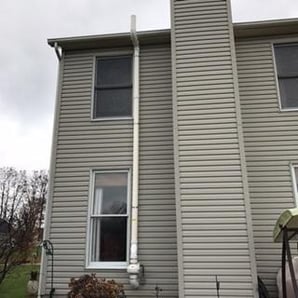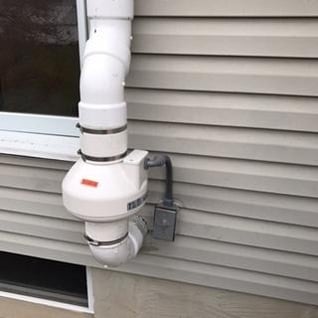Passive vs. Active Radon Mitigation Systems
If you are purchasing a home that contains a Radon Mitigation System, it is important to find out if the system is Passive or Active. And here is an explanation:
Want more information about radon mitigation? Read our blog post: “Frequently Asked Radon Mitigation Questions.”
Table of Contents
Passive Radon Mitigation System

A passive radon mitigation system is typically installed when a home is being built. A passive system only contains two elements:
- a vent pipe that extends from the sub-slab up to the eave line of the roof
- a physical barrier between the soil and house foundation
A passive system relies on natural pressure differentials and air currents to eliminate radon from the home.
Often when a home is being built, the building company will install a passive system without ever testing the home for radon.
This can be a problem because passive radon systems do not bring extremely high levels of radon below the EPA recommended 4.0.
Many home buyers do not realize this when purchasing a home with a passive system.
A passive radon system works well for homes with lower radon levels; it keeps the radon concentration levels from spiking throughout a given day. However, if the home has elevated levels of radon gas, a passive system is not the best option to reduce the levels.
Active Radon Mitigation System

An active radon mitigation system is installed when homes contain elevated levels of radon gas. The active systems have four elements:
- electric vent fan
- a system failure warning device
- a vent pipe running from the sub-slab of the basement up above the eave line of the roof or in the garage attic
- sealed and caulked cracks in the foundation
There are several ways for an active mitigation system to be installed depending on the layout of the home. It is referred to as an active system because the fan is always pulling the radon from underneath the home and venting outside.
The EPA recommends an active radon system be installed if the home contains radon levels at or above a 4.0.
With that being said, if your home already has a passive system and the radon levels test high, a licensed specialist can add a fan to the passive system to make it active which should lower the radon gas levels.
If your home has never been tested and contains a passive mitigation system, it is important to make sure the home is safe and does not contain elevated levels of radon.
Contact Radon Eliminator
Radon Eliminator has a team of certified technicians who will come to your home and test for radon gas and add a fan to your passive mitigation system if necessary. We are also licensed to install active radon mitigation systems if your home contains elevated levels of radon.
Contact us for a radon test or for a radon removal method that best suits your home!






